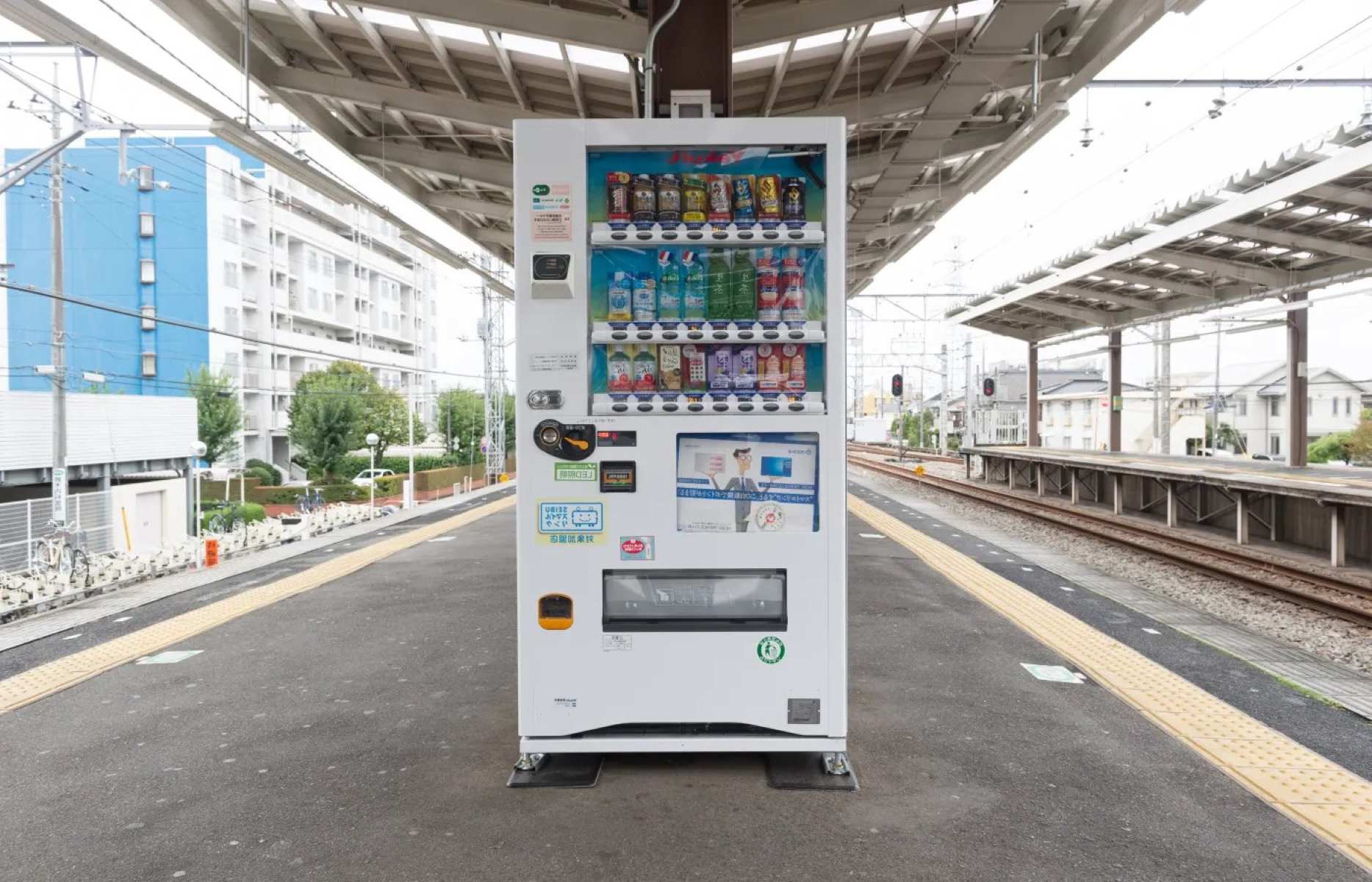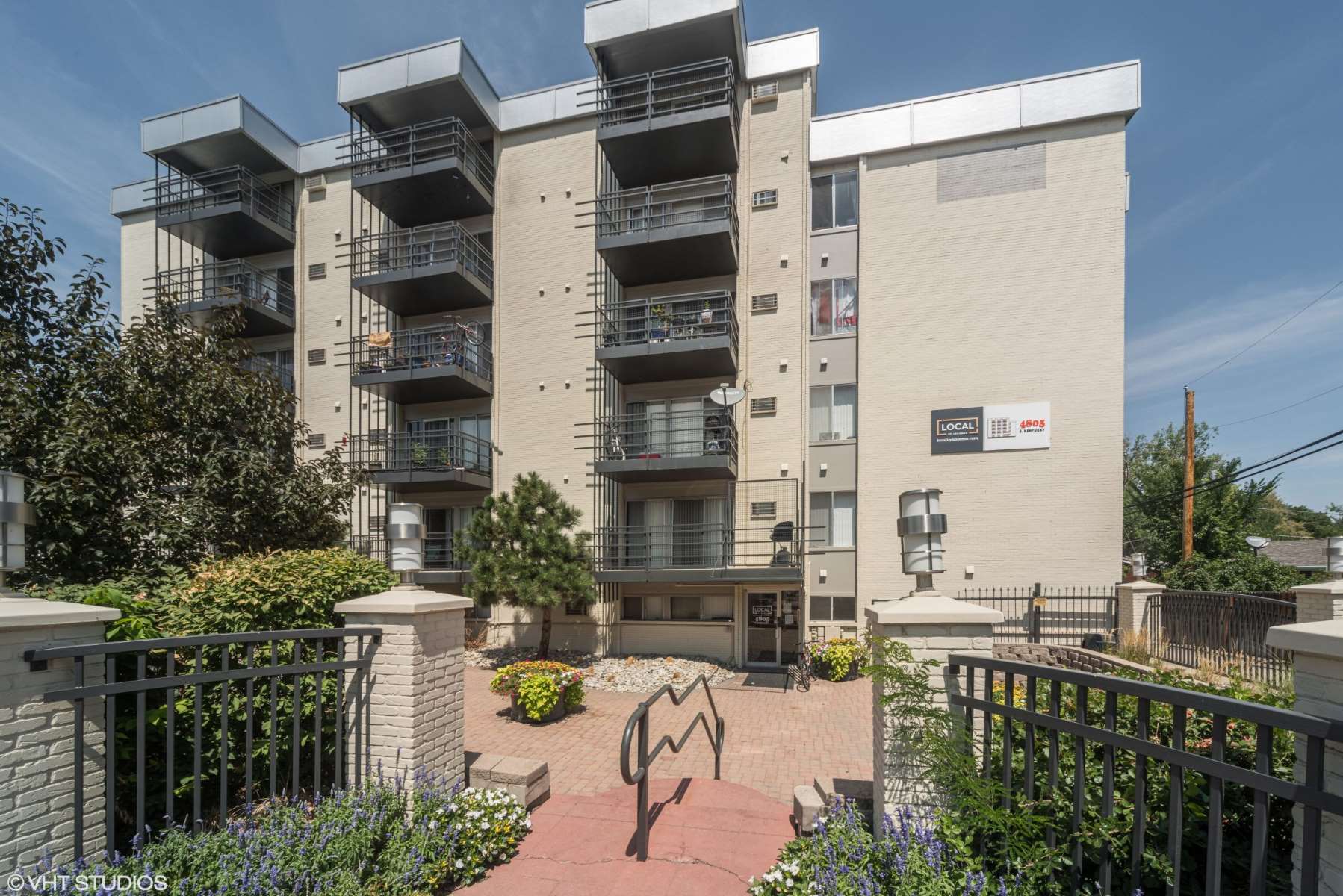Home>Business and Finance>How To Find The Best Vending Machine Locations


Business and Finance
How To Find The Best Vending Machine Locations
Modified: April 1, 2024
Learn how to find profitable vending machine locations with our expert tips and strategies. Maximize your business and finance potential today!
(Many of the links in this article redirect to a specific reviewed product. Your purchase of these products through affiliate links helps to generate commission for Regretless.com, at no extra cost. Learn more)
Table of Contents
Introduction
Finding the best vending machine locations is a crucial aspect of running a successful vending business. The right locations can significantly impact the profitability and success of your vending machines. However, identifying these prime spots requires careful consideration, strategic planning, and a thorough understanding of your target audience's preferences and behaviors.
In this comprehensive guide, we will delve into the essential steps and strategies for identifying and securing the best vending machine locations. From understanding your target audience to negotiating with property owners and evaluating potential locations, we will explore the intricacies of this process to help you make informed decisions and maximize the potential of your vending business.
By the end of this guide, you will have a clear roadmap for identifying high-traffic areas, negotiating favorable agreements, and ultimately securing the best vending machine locations to drive profitability and long-term success. Let's embark on this insightful journey to unlock the potential of your vending business and elevate your entrepreneurial endeavors.
Understanding Your Target Audience
Understanding your target audience is the cornerstone of identifying the best vending machine locations. By gaining insights into the preferences, habits, and demographics of your potential customers, you can strategically position your vending machines in areas where they are most likely to attract attention and generate sales.
To begin, conduct thorough market research to profile your target audience. Consider factors such as age, gender, occupation, and lifestyle preferences. For instance, if your vending machine offers healthy snacks and beverages, targeting locations with health-conscious individuals, such as fitness centers, yoga studios, or corporate wellness facilities, can be highly effective.
Moreover, analyze consumer behavior and purchasing patterns. Are your target customers more inclined towards on-the-go convenience or leisurely browsing? Understanding these nuances can guide your decision-making process when selecting vending machine locations. For instance, if your target audience comprises busy professionals, high-traffic areas near office buildings or business centers may present lucrative opportunities.
Furthermore, consider the psychographics of your target audience. What are their interests, values, and motivations? By aligning your vending machine offerings with the lifestyle and preferences of your potential customers, you can tailor your location selection to cater to their specific needs and desires.
In addition, leverage data analytics and customer feedback to refine your understanding of your target audience. Monitor sales trends, product preferences, and customer feedback to gain valuable insights into consumer preferences and behaviors. This data-driven approach can help you identify the most promising locations where your vending machines are likely to resonate with your target audience.
By comprehensively understanding your target audience, you can strategically position your vending machines in locations that align with the preferences and behaviors of your potential customers. This targeted approach increases the likelihood of capturing the attention of your audience and driving sales, ultimately contributing to the overall success of your vending business.
Researching High-Traffic Areas
Researching high-traffic areas is a pivotal step in the process of finding the best vending machine locations. Identifying locations with a steady flow of foot traffic is essential for maximizing the visibility and accessibility of your vending machines. By strategically positioning your machines in high-traffic areas, you can significantly increase the likelihood of attracting potential customers and driving sales.
To begin, leverage data and analytics to identify areas with high footfall. Utilize demographic data, foot traffic patterns, and consumer behavior insights to pinpoint locations where people congregate in large numbers. This can include popular shopping districts, transportation hubs, entertainment venues, and tourist attractions. By analyzing foot traffic trends and consumer behavior in these areas, you can gain valuable insights into the potential customer base and the level of demand for vending machine offerings.
Furthermore, consider the surrounding businesses and establishments in high-traffic areas. Identify complementary businesses, such as gyms, schools, office complexes, and retail outlets, where your vending machines can complement the existing consumer ecosystem. Collaborating with these businesses can create mutually beneficial partnerships and enhance the visibility of your vending machines among their patrons.
Moreover, assess the accessibility and visibility of potential locations within high-traffic areas. Look for areas with ample space, visibility, and convenience for customers to access the vending machines. High-visibility locations, such as near entrances, waiting areas, or communal spaces, can increase the exposure of your vending machines to passersby, thereby maximizing the potential for sales and customer engagement.
Additionally, consider the safety and security of high-traffic areas when researching potential locations for your vending machines. Prioritize areas with adequate lighting, surveillance, and a safe environment for customers to make purchases. Ensuring the safety and security of your vending machine locations not only fosters a positive customer experience but also protects your investment from potential risks.
By meticulously researching high-traffic areas and identifying locations with a high concentration of potential customers, you can strategically position your vending machines to capitalize on consumer traffic and drive sales. This proactive approach to location research lays the foundation for securing prime vending machine locations that offer optimal visibility, accessibility, and potential for revenue generation.
Negotiating with Property Owners
Negotiating with property owners is a critical aspect of securing the best vending machine locations. Establishing favorable agreements with property owners or managers can significantly impact the success and profitability of your vending business. Effective negotiation skills, coupled with a thorough understanding of the property owner's perspective, are essential for navigating this process successfully.
To initiate the negotiation process, conduct thorough research on the property and its surrounding area. Understand the demographics of the location, foot traffic patterns, and the potential value your vending machines can bring to the property. Armed with this information, approach the property owner with a clear value proposition that highlights the benefits of having your vending machines on their premises.
When negotiating with property owners, emphasize the value that your vending machines can bring to their property. Highlight the convenience and amenities that your offerings provide to the property's occupants or visitors. Whether it's providing a quick snack option for employees, enhancing the overall experience for customers, or generating additional revenue for the property, articulating the value proposition can resonate with property owners and demonstrate the mutual benefits of the partnership.
Furthermore, be prepared to address any concerns or objections that the property owner may raise during the negotiation process. Common concerns may include maintenance responsibilities, revenue sharing arrangements, or the aesthetic impact of vending machines on the property. By proactively addressing these concerns and offering viable solutions, such as regular maintenance schedules, fair revenue sharing models, and aesthetically pleasing vending machine designs, you can alleviate the property owner's apprehensions and build a foundation of trust and collaboration.
Additionally, be flexible and open to negotiation terms that align with the interests of the property owner. Consider offering a trial period or performance-based incentives to showcase the value of your vending machines before finalizing long-term agreements. By demonstrating a willingness to accommodate the property owner's needs and concerns, you can foster a collaborative and mutually beneficial partnership that lays the groundwork for long-term success.
In summary, negotiating with property owners requires a strategic and empathetic approach that emphasizes the value of your vending machines while addressing the concerns and priorities of the property owner. By showcasing the benefits of having your vending machines on their premises, addressing potential concerns, and being open to collaborative arrangements, you can secure favorable agreements that pave the way for successful vending machine placements in prime locations.
Evaluating Potential Locations
Evaluating potential locations for vending machines is a meticulous process that requires a comprehensive assessment of various factors to determine the viability and potential success of each site. By conducting a thorough evaluation, vending business owners can make informed decisions and strategically position their machines in locations that offer optimal visibility, accessibility, and potential for revenue generation.
To begin the evaluation process, consider the demographic profile of the location. Analyze the age groups, occupations, and lifestyle preferences of the individuals who frequent the area. Understanding the demographic makeup of the potential customer base is crucial for aligning the vending machine offerings with the preferences and needs of the target audience.
Furthermore, assess the foot traffic and consumer behavior within the potential locations. Look for areas with consistent and substantial foot traffic, indicating a steady flow of potential customers. Additionally, observe consumer behavior patterns to gauge the level of engagement and receptiveness to vending machine offerings. High levels of foot traffic coupled with favorable consumer behavior can signify a promising location for vending machines.
Moreover, evaluate the competitive landscape within the potential locations. Assess the presence of existing vending machines, retail outlets, or food service establishments that offer similar products. Understanding the competitive environment can help identify opportunities to differentiate the vending machine offerings and carve out a unique value proposition that resonates with potential customers.
Consider the physical attributes of the location, such as visibility, accessibility, and available space for vending machines. High-visibility areas with ample space and convenient access points can enhance the exposure of vending machines to passersby, increasing the likelihood of attracting customers and driving sales. Additionally, assess the proximity of potential locations to complementary businesses or amenities that can attract a relevant customer base.
Furthermore, evaluate the regulatory and logistical considerations associated with each potential location. Ensure compliance with local regulations, zoning laws, and property management guidelines. Additionally, assess the logistical feasibility of installing and maintaining vending machines in each location, considering factors such as power supply, maintenance access, and security measures.
By meticulously evaluating potential locations based on demographic profile, foot traffic, consumer behavior, competitive landscape, physical attributes, and regulatory considerations, vending business owners can identify prime locations that align with their target audience's preferences and offer substantial potential for revenue generation. This strategic evaluation process forms the foundation for securing the best vending machine locations and maximizing the success of the vending business.
Securing the Best Vending Machine Locations
Securing the best vending machine locations is the culmination of strategic planning, diligent research, and effective negotiation. Once potential locations have been identified and evaluated, the process of securing these prime spots involves navigating agreements, finalizing placements, and setting the stage for long-term success.
The first step in securing the best vending machine locations involves finalizing agreements with property owners or managers. This entails formalizing the terms and conditions of the vending machine placement, including lease agreements, revenue sharing models, and maintenance responsibilities. Effective communication and transparency are essential during this stage to ensure that both parties are aligned on the terms of the arrangement. By clearly outlining the rights and obligations of each party, potential conflicts can be mitigated, and a solid foundation for the partnership can be established.
Following the agreement phase, the logistical aspects of vending machine placement come into play. This includes coordinating the delivery, installation, and setup of the vending machines in the designated locations. Attention to detail is crucial during this phase to ensure that the machines are positioned optimally for visibility, accessibility, and operational efficiency. Additionally, establishing clear communication channels with property management or relevant stakeholders can facilitate a smooth installation process and foster positive relationships with the property owners.
Once the vending machines are in place, it is essential to monitor and evaluate their performance in the new locations. Tracking sales data, customer feedback, and operational metrics can provide valuable insights into the effectiveness of the placements and the receptiveness of the target audience. This ongoing evaluation allows for adjustments and refinements to be made, ensuring that the vending machines continue to thrive in their respective locations.
Moreover, fostering positive relationships with property owners and the surrounding community is integral to the long-term success of vending machine placements. Regular communication, proactive maintenance, and responsive customer service can contribute to a positive perception of the vending machines and strengthen the partnership with the property owners. By demonstrating a commitment to the success and upkeep of the vending machines, a mutually beneficial relationship can be cultivated, opening doors for potential expansion and additional placements in the future.
In essence, securing the best vending machine locations involves a multi-faceted approach that encompasses legal agreements, logistical coordination, performance evaluation, and relationship building. By navigating this process with diligence, professionalism, and a customer-centric mindset, vending business owners can solidify their presence in prime locations and set the stage for sustained profitability and growth.
Conclusion
In conclusion, finding and securing the best vending machine locations is a multifaceted endeavor that requires a deep understanding of the target audience, meticulous research, effective negotiation, and strategic evaluation. By aligning the placement of vending machines with the preferences and behaviors of the target audience, businesses can maximize visibility, accessibility, and revenue potential.
Understanding the target audience forms the bedrock of successful vending machine placements. By delving into the demographics, consumer behavior, and psychographics of potential customers, businesses can tailor their location selection to resonate with the specific needs and preferences of their audience. This targeted approach increases the likelihood of capturing the attention of potential customers and driving sales.
Researching high-traffic areas is instrumental in identifying prime locations for vending machines. Analyzing foot traffic patterns, consumer behavior, and the surrounding business ecosystem provides valuable insights into the potential customer base and the level of demand for vending machine offerings. Leveraging this data allows businesses to strategically position their machines in areas with a high concentration of potential customers.
Negotiating with property owners is a pivotal step in securing favorable agreements for vending machine placements. By emphasizing the value proposition of vending machines and addressing the concerns of property owners, businesses can establish collaborative partnerships that benefit both parties. Effective negotiation skills and a customer-centric approach are essential for navigating this process successfully.
Evaluating potential locations involves a comprehensive assessment of demographic profiles, foot traffic, competitive landscape, physical attributes, and regulatory considerations. By meticulously evaluating these factors, businesses can identify prime locations that align with their target audience's preferences and offer substantial potential for revenue generation.
Securing the best vending machine locations encompasses finalizing agreements, coordinating installations, monitoring performance, and fostering positive relationships with property owners. This holistic approach sets the stage for sustained profitability and growth, laying the groundwork for long-term success in the vending business.
In essence, the process of finding and securing the best vending machine locations is a strategic and dynamic journey that requires a deep understanding of consumer behavior, effective negotiation skills, and a proactive approach to location selection and placement. By leveraging these insights and strategies, businesses can position their vending machines for maximum impact and long-term success in the competitive vending industry.














